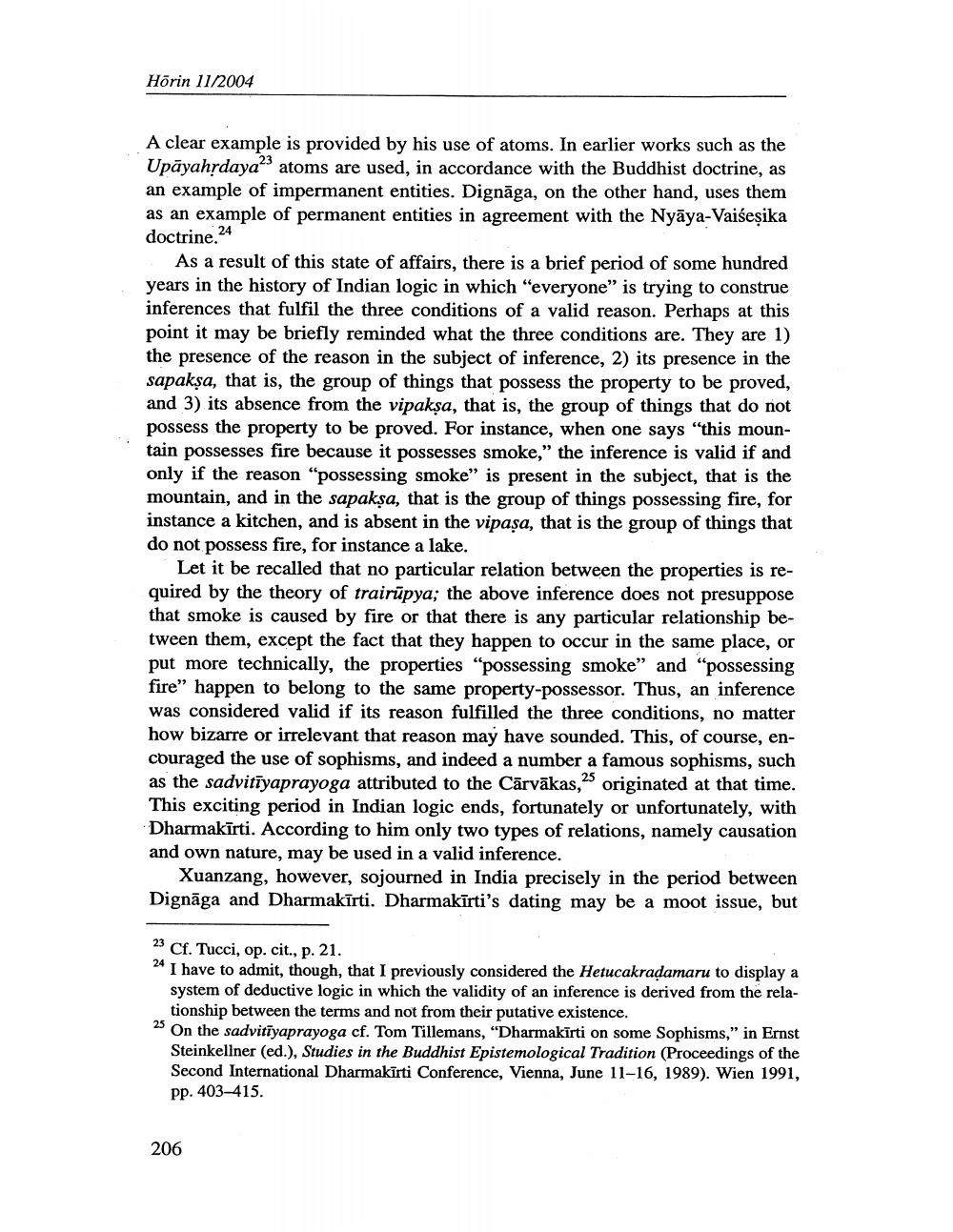________________
Hörin 11/2004
A clear example is provided by his use of atoms. In earlier works such as the Upāyahrdaya” atoms are used, in accordance with the Buddhist doctrine, as an example of impermanent entities. Dignāga, on the other hand, uses them as an example of permanent entities in agreement with the Nyāya-Vaiseșika doctrine 24
As a result of this state of affairs, there is a brief period of some hundred years in the history of Indian logic in which "everyone” is trying to construe inferences that fulfil the three conditions of a valid reason. Perhaps at this point it may be briefly reminded what the three conditions are. They are 1) the presence of the reason in the subject of inference, 2) its presence in the sapakşa, that is, the group of things that possess the property to be proved, and 3) its absence from the vipaksa, that is, the group of things that do not possess the property to be proved. For instance, when one says "this mountain possesses fire because it possesses smoke," the inference is valid if and only if the reason "possessing smoke" is present in the subject, that is the mountain, and in the sapakşa, that is the group of things possessing fire, for instance a kitchen, and is absent in the vipaşa, that is the group of things that do not possess fire, for instance a lake.
Let it be recalled that no particular relation between the properties is required by the theory of trairūpya; the above inference does not presuppose that smoke is caused by fire or that there is any particular relationship between them, except the fact that they happen to occur in the same place, or put more technically, the properties "possessing smoke" and "possessing fire" happen to belong to the same property-possessor. Thus, an inference was considered valid if its reason fulfilled the three conditions, no matter how bizarre or irrelevant that reason may have sounded. This, of course, encouraged the use of sophisms, and indeed a number a famous sophisms, such as the sadvitīyaprayoga attributed to the Cārvākas, originated at that time. This exciting period in Indian logic ends, fortunately or unfortunately, with Dharmakīrti. According to him only two types of relations, namely causation and own nature, may be used in a valid inference.
Xuanzang, however, sojourned in India precisely in the period between Dignāga and Dharmakīrti. Dharmakīrti's dating may be a moot issue, but
23 Cf. Tucci, op. cit., p. 21. * I have to admit, though, that I previously considered the Hetucakradamaru to display a
system of deductive logic in which the validity of an inference is derived from the rela
tionship between the terms and not from their putative existence. 2 On the sadvitiyaprayoga cf. Tom Tillemans, "Dharmakīrti on some Sophisms," in Ernst
Steinkellner (ed.), Studies in the Buddhist Epistemological Tradition (Proceedings of the Second International Dharmakīrti Conference, Vienna, June 11-16, 1989). Wien 1991, pp. 403-415.
206




